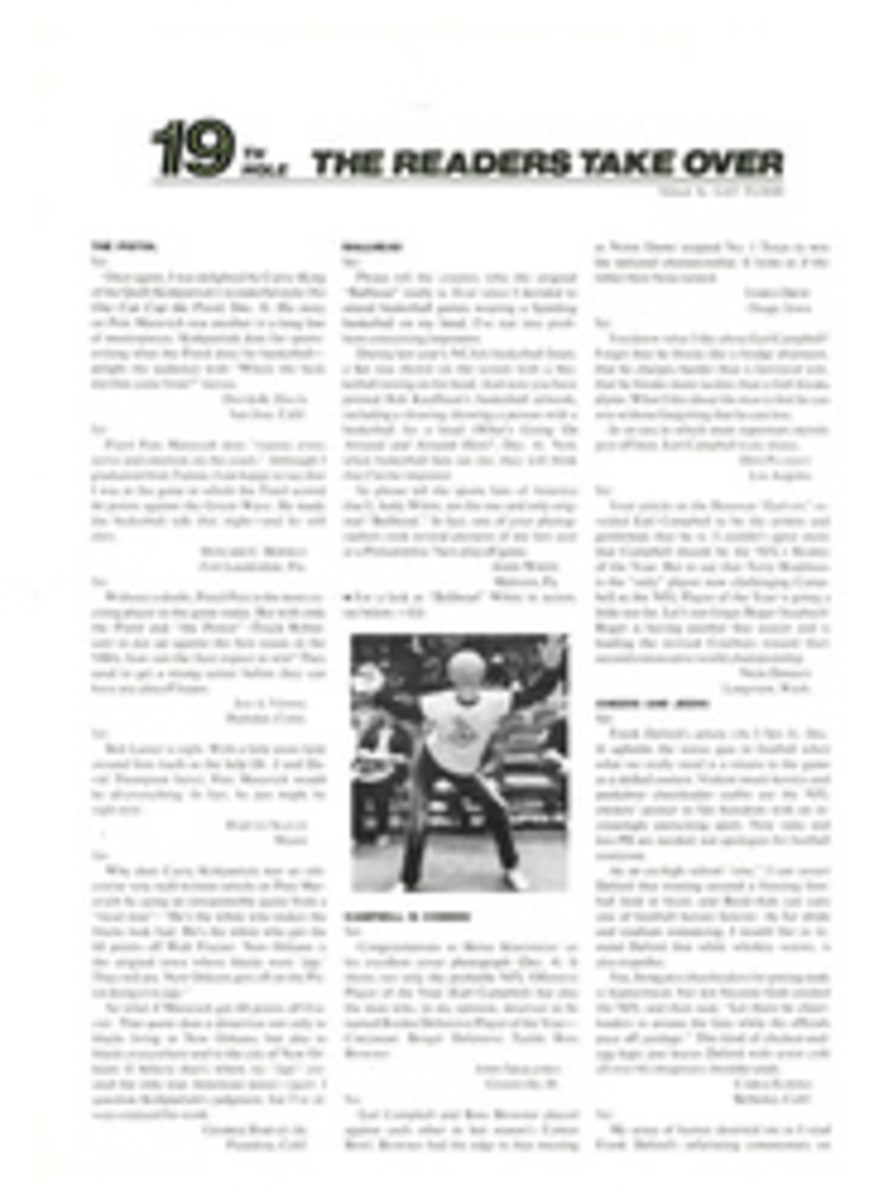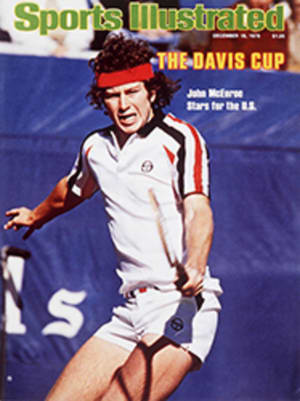
TWO BASKETBALL NOVELS, ONE TALL AND ONE SMALL, PLAY THE SAME GAME
For reasons that are not difficult to pin down, basketball has been popping up in American fiction with increasing frequency. It is essentially an urban game, with rhythms that mirror those of an urban nation. Its interracial composition provides a made-to-order setting for stories about racial conflict and change. Its five-man team is large enough to embrace a diverse cast of characters, yet small enough to permit each of them to assert his own clear identity.
To say that basketball fiction is on the increase is not, however, to say that much of it is especially good. The best basketball writing so far has been nonfiction: Pete Axthelm's The City Game and Charles Rosen's Scandals of '51. The most successful basketball novel is an early example of the genre, Jeremy Larner's Drive, He Said. But as novelists keep pounding away at the subject, a "literature" of the sport has developed. Two recent examples, The Best Ride to New York, by Bob Levin (Harper and Row, $8.95), and Haymon's Crowd, by Robert Greenfield (Summit Books, $9.95), are cases in point. Levin's novel is modest and. within the limits of its modesty, admirable; it tells a small story skillfully and sensitively. Greenfield's, on the other hand, is overblown and almost entirely without redeeming virtues; it is self-indulgent, melodramatic and execrably written. Yet, dissimilar though they are in execution, the two books have a great deal in common.
To begin with, each is about a player of limited abilities. Jake Baer, the narrator of Best Ride, never makes the NBA and satisfies his love of the game by playing in a Pennsylvania minor league; he has "no assets but a jump shot and a knee they can't cut no more out of." Haymon Jacobs, in Haymon's Crowd, is a clumsy giant whose height is "an embarrassment of the first order, like a crippled arm or a cleft palate." He does reach the NBA, but his career is scarcely distinguished.
Secondly, in each novel a playground or schoolyard pickup game becomes a decisive confrontation. Haymon's Crowd opens with a fierce game among schoolboys in which Haymon is bloodied and humiliated—as he will be many more times. The climactic episode of Best Ride is a playground game in which Baer tests the mettle of—and attempts to humiliate—a celebrated Philadelphia high school star.
Which brings us to the third point: each novel is immersed in basketball's seamy underside. Baer's objective is to win the Philadelphia player's respect so that he will be receptive to point shaving when he enters college; the matchup thus becomes a lesson in life's chilly realities. In Haymon's Crowd we get not only point shaving, but also drug addiction and gangland murders.
Its disreputable aspects notwithstanding, for both Jacobs and Baer basketball—the pure, unsullied game—is a form of religion. In fact, there are strikingly similar passages in the two books. From Best Ride: "Some people have religion to believe in. Some have flying saucers and some the vigorish. My jump shot is what I've held onto." From Haymon's Crowd: "The game of basketball is the only religion Haymon really has. Its rules are the only ones he truly accepts."
Which leads to the final point: in each novel, the central character finds himself in a game in which he suddenly plays beyond himself, in which basketball ceases to be a game to be won or lost and becomes a private ballet of beauty and mystery. Since Levin is the better writer, let him describe the sensation:
"His soaking chest still pressed my back. His knobby leg slid between mine. Our straining arms tangled. But everything was distanced and removed. The province of another dimension. I was of it but unique in it. The all existed, as it always had and would; and Jake Baer swirled in the lights with the smoke. He hung like a trophy with the banners and twisted in the air as golden dust. Jake Baer was everywhere, all places, simultaneously all things; but he was, too, an entity, a whole, specific, encapsulated, removed, contained secure within himself."
This is a fundamentally romantic vision, of course, and for all their nods in the direction of basketball's sleazy side both writers see the game in romantic terms. Greenfield, indeed, views it as "a game of life itself"—but his capacity for excess seems limitless: "Each morning. Reed sits at the fraternity table in a knit cardigan and a candy-striped shirt, working at the New York Times crossword puzzle as black men who long ago joined the brotherhood of heroin nod out over steel trolleys laden with dishes on which spaghetti reds and egg-yolk yellows have dried like the caked layers on an artist's palette."
Writing like that would foul out Haymon's Crowd even if it offered compensatory virtues, which unfortunately it does not. Its characters are cardboard, its pontification is a bore, and it contains far too many plots and sub-plots and sub-sub-plots.
Best Ride, on the other hand, demonstrates that basketball offers a legitimate and provocative setting for serious fiction. If it conforms to just about all the conventions of its young but growing genre, at least it does so with restraint, humor and compassion.

